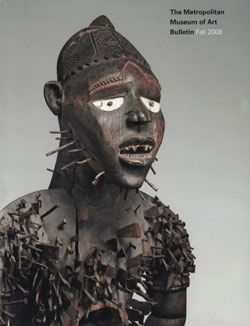Young Faun with Heron
Frederick William MacMonnies American
Cast by Jaboeuf et Rouard French
In 1889, Ambassador and Mrs. Joseph H. Choate commissioned MacMonnies to complete Young Faun with Heron for the garden of their home in Stockbridge, Massachusetts. This reduction of the original full-scale sculpture depicts a male youth—identified as a faun by his crown of leaves—restraining an enormous heron. The subject is derived from pagan motifs in antique art. Intricately detailed texture on the bird’s enveloping wings contrasts with the smooth flesh of the young faun to add visual richness to the grouping.
Like many of MacMonnies’ bronze reductions, casts of Young Faun with Heron achieved wide commercial success in the United States and France at the turn of the twentieth century. When demand for statuettes was steady, artists would often invest in bronze "master models" to be used during the sand casting process. Unlike softer plaster casts that wear down after several molds have been pulled, these master casts retain their crisp detail and accurate scale. This sculpture is one such master model, with eighteen visible pins at the joins that secure nine separate pieces. As such, this model would have generated pieces for casts of Young Faun with Heron, which were then assembled, finished, and patinated. American master models with visible pins and seam lines are extremely rare, and make vivid the complicated process of bronze casting.
This image cannot be enlarged, viewed at full screen, or downloaded.


